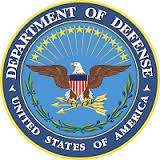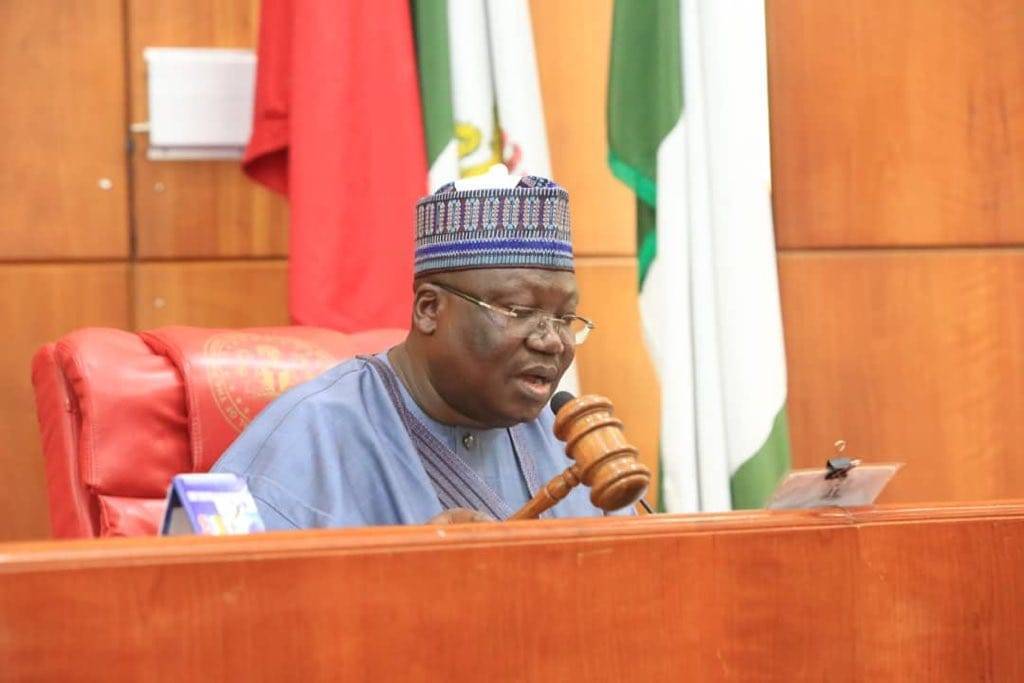Employees of the Washington Military Department have been at the center of the COVID-19 response since the beginning, helping the state’s health department with pandemic planning before the pandemic was even on the national radar and helping with logistics, operations and planning support as the response became critical.
Soldiers and airmen of the Washington National Guard have helped at testing sites, in food banks and, more recently, in a call center where they help track where the virus spreads.
The state Emergency Operations Center was partially activated Jan. 22. It included officials from the state’s health department and external affairs. Two days later, the center was fully activated with the health department’s incident management team working out of the SEOC. Personnel were split between Health’s lab at Shoreline, its headquarters in Tumwater and the SEOC on Camp Murray. By mid-March, officials from the Department of Health, Washington Emergency Management Division and the Washington State Department of Social and Health Services developed a unified command structure.
For a few days at the end of February and beginning of March, teams from Health, Emergency Management and other state agencies came together to craft and strategize for some of the nonpharmaceutical interventions that would help guide the state in the months to come.
“Its purpose is to help public health officials, emergency management and partners choose which mitigation strategies to implement to limit and prevent the spread of novel respiratory diseases of concern,” Chris Utzinger, EOC response section manager, said Feb. 28.
The marathon sessions started with the obvious advice: encouraging state residents to increase their hand washing and use of alcohol-based sanitizer, frequently clean and disinfect surfaces, and show proper cough and hygiene etiquette. Then, the nonpharmaceutical interventions started mentioning things that would become commonplace months later: social distancing, isolating sick people, cancelling public and large private gatherings, and ordering the closure of schools, child care facilities, workplaces and public buildings.
By the second week of March, restaurant doors were closed, schools were shut down and people were told to stay home unless they were going out for an “essential” service, such as shopping for groceries. Employees at the Washington Military Department were given unprecedented access to teleworking and told to stay home if they could.
“While this emergency can be unnerving, more than anything, I ask you to stay calm,” the state’s adjutant general, Army Maj. Gen. Bret D. Daugherty, wrote in an email March 19. “Together, we’re going to get through this. I can assure you of that. Combining our state and federal forces, we have a talented team working day and night to help address this situation, and I’m confident we’re making a difference. Let’s continue to lead by example and take the steps necessary to slow the spread.”
Vice President Visit
On March 5, before widespread shutdowns hit the state, Vice President Mike Pence visited Camp Murray, bringing many top federal officials with him. At the time, Washington state had been the hardest-hit state, with at least 70 confirmed infections and 11 dead.
Pence started with a tour of the state Emergency Operations Center, where he “bumped elbows” with line staff that filled the room.
“As the state of Washington, and the Seattle area in particular, deals with the coronavirus, we’re going to continue to make sure that you have the full support of every agency in the federal government,” Pence said. “We know you’re the front line.”
Joining him were 10 of the 11 congressional officials representing Washington state, as well as Gov. Jay R. Islee, together in the EOC for the first time in recent memory.
Dual-Status Command
Army Brig. Gen. Bryan Grenon, Task Force Steelhead commander and Seattle Police Department captain, started off the COVID-19 response as the dual-status commander in Seattle. To assist the response, the Federal Emergency Management Agency deployed an Army field hospital to the CenturyLink Event Center, and Grenon was the conduit among the responding agencies, U.S Northern Command, Title 10 and Title 32 soldiers, and federal and state emergency response agencies and leaders.
Grenon said his civilian career positively affected his time as the DSC.
“I think that this is something that Northcom didn’t anticipate, because of my role as a [police] captain, I had very strong relationships not only with these police departments, but with the city government and also the Seattle Fire Department.”
Grenon’s experience as the DSC was short, but it provided the opportunity to learn how to better engage and communicate when interacting with so many different agencies through the pandemic response, he said.
The Guard is Called to Support
As the economy suffered and unemployment skyrocketed, food banks across the state were slammed with requests. At the same time that demand climbed, volunteers who were relied upon to operate local food banks were forced to stay home, many of whom fall in the at-risk categories for COVID-19.
“The Washington National Guard will provide important help to our communities to ensure our critical food banks remain stocked and operational,” Inslee said in a tweet. “They’re filling an important need, and I ask that you welcome them in your communities as they process, package and distribute meals.” This is something our state has never done before — but it’s something we can take lessons out of in case we have an earthquake or other disaster. We had some folks at the state talking to each other who had never talked to each other before.”Taylor Hennessee, Washington Emergency Management Division
Airmen and soldiers from the 194th Wing and 81st Brigade Combat Team jumped at the chance to help their neighbors in Chelan, Franklin, King, Pierce and Walla Walla counties right away.
“These guardsmen will provide critical support to our food banks and pantries that are low on staff and need help getting food to some of our most vulnerable citizens,” Daugherty said. “By looking out for our neighbors and following proper health safety guidelines, we will get through this together.”
As the need grew, so did the requests for guard support at food banks across the state. By the end of April, more than 700 guardsmen were supporting operations at 43 food banks and distribution centers across Washington. Food Lifeline set up a distribution center in south downtown Seattle with the support of more than 200 guardsmen helping them process, pack and distribute food and goods to more than 300 food banks across the state.
Army Sgt. Kyle Sprague, 1st Battalion, 161st Infantry Regiment, volunteered for the opportunity to serve with Food Lifeline in Seattle after seeing how the “Stay Home, Stay Healthy” order was affecting the area.
“When driving through Seattle, you see a lot of boarded-up businesses,” Sprague said. “That’s a lot of lost wages. When I saw it, I realized that the community needs help and what better way to, to get out and help an organization like Food Lifeline.”
Kate Wright, the executive director at the Edgewood food bank, said that the support was critical because many of the staff were listed as high-risk if they caught the virus.
“I am not supposed to be here,” Wright said. “I could be high-risk, so having the guard here is so helpful. We are helping to feed more than 400 families a week now, almost double what we were at before the COVID-19 pandemic.” As the need for COVID-19 testing across the state grew, the Washington National Guard was asked to support. Dressed in full personal protective equipment, the guardsmen worked with doctors and nurses at community-based testing sites across the state to expand testing capabilities.
“There are only so many resources here in the area so every person counts in this operation, from the medics who test, to the people who do traffic enforcement, to those in administration,” said Air Force Senior Airman Ryley Glick at a Grays Harbor site. “We’re lending extra hands to those who need it.”
Wearing Masks is the New Norm
At the beginning of April, the Centers for Disease Control and Prevention recommended the use of face masks when social distancing couldn’t be achieved. That led one Washington National Guard mother to recruit some help to carry out an important mission of providing masks to soldiers and airmen.
“It was something for my mom and her friends to do during this time, it is their way to support the COVID-19 response,” said Army Lt. Col. Josh Daily, future operations officer with the Washington Army National Guard.
Daily’s mother, Roberta Yoshimura, and her friends Ruth Dingfield and Jeanne Gallagher, dug out their sewing needles and fabric to create masks so guardsmen supporting local food banks would be protected.
“So many amazing people have selflessly provided protective masks for our soldiers and airmen,” said Army Brig. Gen. Dan Dent, commanding general of the Washington Army National Guard. “It is during times like this that great people rise up to answer the call for our country.”
In early April, Kathryn Salo, along with Wendy and Elizabeth Phippen, stitched together and donated hundreds of masks for guardsmen which were passed out to soldiers on Camp Murray.
Air Force Staff Sgt. Rachel Yandon, a radio frequency transmission systems apprentice working in the 225th Support Squadron’s Communications Focal Point, volunteered to hand-sew 150 cloth protective masks and sent them to a hospital in Alabama.
Chaplains Provide Guidance During Tough Times
Knowing that soldiers and airmen with the Washington National Guard, like everyone else, have a wide variety of emotions during a disaster — fear, anger, stress — Army Chaplain (Col.) Don Brewer, the state chaplain for the Washington National Guard, asked all chaplains to reach out and conduct health and wellness checks during the COVID-19 response.
One of those chaplains called to action was Army Chaplain (Capt.) Denise Denniston, chaplain for the 341st Military Intelligence Battalion.
“I have been calling our soldiers,” Denniston said. “My main focus is to check in on them as well as connect them directly with any resources that they may need at this time. I know Chap. Brewer’s intent was to make sure all our soldiers were taken care of at this time.”
The resources that Denniston often suggests are through the Joint Service Support office, which has staff members that can help guardsmen with health, finances or any mental/physical struggle. One type of resource came through the National Guard Association of Washington, which started providing guardsmen in need with $10,000 in grocery store gift cards.
“Our association is working with Joint Service Support to ensure all of our Washington guardsmen are taken care of during this time,” said Bob Sweeney, executive director of the National Guard Association of Washington. “It is just part of taking care of our airmen and soldiers.”
Drilling during COVID
For Washington National Guardsmen, the COVID-19 pandemic changed how they conduct their monthly inactive duty training.
While some units decided to move their drill days to another month, for the soldiers of the 56th Theater Information Operations Group, Army Col. Gerald Dezsofi and his command teams made a decision to drill from home during the first weekend of April and May.
“This was a great chance for us to not only catch up on administrative requirements, but we are also testing our soldiers to work, think, plan and act in an unfamiliar environment,” Dezsofi said. “It forced them to adapt to a new environment with unexpected challenges.”
Another unit that teleworked for their drill weekend was the 141st Air Refueling Wing located at Fairchild Air Force Base. In their monthly newsletter, Air Force Col. Larry Gardner described the challenges and how he wanted his leaders to overcome them.
“These challenges must be met with fundamental change on how we operate and a resolute discipline and timely led-turn to meet the next set of challenges not yet encountered,” Gardner said. “We must lead with compassion and understanding; our number one priority is our airmen and their families.”
Changes at the Youth Academy
As schools across the state began to close their doors, the Washington Youth Academy had a full class of cadets residing on campus.
“When we heard about the virus in January, we began reviewing our safety protocols,” said Amy Steinhilber, director of the Washington Youth Academy. “By March, we began communicating regularly with the families, letting them know what we were doing to keep their kids safe.”
While the Washington Youth Academy students can isolate in one secure area, the staff and external support can’t. When Inslee issued his Stay Home, Stay Healthy proclamation on March 15, Steinhilber and Army Maj. Gen.Daugherty made the call to close the campus and send the cadets home.
“We gave them options,” Steinhilber said. “They could come back for a future cycle or continue their studies online. We had 151 kids take part in our online campus. Within a week, IT Support contacted community partners and provided us 365 accounts and accessibility technology, like laptops, as needed so we could continue the mission to reclaim youth.”
The staff believes the little time they had with the cadets made a lasting impression.
“Out of the 151 kids we started with, over 70 percent are on track to complete the cycle, with others needing a little more time to finish,” Steinhilber said. “This is all new to us, but faculty and staff reacted quickly to ready the curriculum for the online collaboration with our cadets.”
Plans are now underway to invite cadets unable to take full advantage of the online environment back to campus with safety in mind.
“We are enhancing protocols to social distance, limit exposure and continue to provide a safe place for our cadets to thrive,” Steinhilber said.
Building Test Kits
When Inslee laid out his recovery plan for Washington, testing for COVID-19 was one of his pillars. Ensuring that test kits are readily available has been a team effort between professionals with the Department of Health, AmeriCorp and dozens of members of the Washington National Guard.
“Working with the Department of Health and AmeriCorp has been great, our guys know how important this mission is and are excited to be here,” said Army Maj. Jeff Rogers, a logistician and site leader for the Washington National Guard. “This is all logistics and supply chain management, so being a logistician working this mission is right in my wheelhouse.”
The AmeriCorp volunteers put together the sterile test kit components, then passed them to the guardsmen who put the instructions and sterile test kit bag into an outer biohazard bag. The assembled kits are then packaged into boxes for shipping out to the counties.
“A lot of quality control is happening to ensure that the test kits are properly created, packaged, shipped and tracked,” Rogers said. “Making sure everything is sterile is critical. When new components come in for the test kits, they undergo a sterilization test to ensure the products are safe to use and will give an accurate test reading.”
COVID-19 Mapping
As the state continues to work toward slowing and preventing the spread of COVID-19, members of the Washington National Guard are supporting the state’s Department of Health with voluntary COVID-19 mapping.
“We are not focused on tracking the individual, we’re actually tracking the virus,” said Air Force Lt. Col. Christopher Panush, Task Force Kokanee officer in charge. “COVID-19 mapping is really what we are after; tracking where the virus might spread throughout the communities while working with the Department of Health.”
In describing the process of COVID-19 mapping, Panush emphasized all the information belongs to the health department.
“The important aspect is that [guardsmen] will ask the person, the individual that has the virus, are they willing to be contacted?” he said. “If the answer is yes, then their information will go into the Department of Health’s secure database and it’s assigned a case number.”
Once the case number is established by the epidemiology department at DOH, the case is then distributed to the call workers, who are a combination of Department of Health, Department of Licensing and Washington National Guard personnel.
“The questions during the phone calls are very scripted,” Panush added. “The caller will ask the individuals a series of questions and try and establish where they have been in the past fourteen days. But again, the information is completely voluntary.”
State EOC Support
Employees with the logistics division at the state Emergency Operations Center have had the herculean task of trying to find personal protective equipment at a time when everyone else on the planet was looking for the exact same thing. Even in June, months later, just a fraction of the $411 million in equipment ordered has actually arrived, according to statistics provided by the state Joint Information Center.
“The logistics section has been very short staffed with emergency management personnel to execute this very complex mission during this pandemic response,” said Mark Douglas, logistics supervisor. “We solicited help from other state agencies and received help from DSHS, DOC and the National Guard.”
The most in-demand items have been disposable gowns, N95 masks and powered air purifying respirators. As of May 25, more than 100 Washington manufacturers have re-tooled their facilities to manufacture personal protective equipment to meet that demand.
“We have been successful as a team in getting the limited amount of PPE to the right people at the right time, thanks to these partners and the team,” Douglas said. “It has been a very long activation since mid-January, and we still have a lot of great work ahead.”
In the meantime, the state EOC created a business and infrastructure branch specifically devoted to helping businesses navigate the complicated nature of the pandemic.
Taylor Hennessee and Brian Laughlin, who both work for the Washington Emergency Management Division, took turns leading the team and coordinating agency response from the state Department of Commerce, the Department of Labor & Industries, the state Department of Transportation, the Employment Security Department and assorted private and non-profit partners.
“We had some immediate infrastructure issues — people were flushing down wipes and clogging drains, everywhere,” Laughlin said. “But that was a short-term issue. The long-term issue was how do we help businesses in need and the state with its ‘essential’ designations?”
Confusion spread over whether people would need to show passes to get into cities — and at one point a business re-entry program, designed more for large scale disasters such as earthquakes, was getting overwhelmed and confused with thousands of residents applying for special permission to get to their jobs.
“That was really tough — trying to convince people that there weren’t going to be roadblocks and you didn’t need a special pass,” Laughlin said.
Another issue was coming up with a way to sort through the thousands of questions coming in on who was an essential business, what kind of social distancing measures were required for businesses and more. First, the questions showed up in email boxes — lots of email boxes — until a smart sheet database was established for questions and concerns. Then a team made up of many state agencies came together and started going through the questions to help business owners.
“This is something our state has never done before — but it’s something we can take lessons out of in case we have an earthquake or other disaster,” Hennessee said. “We had some folks at the state talking to each other who had never talked to each other before.”
Hennessee said there were a lot of issues involving the supply chain and rumor busting, as well. Washington state was one of the first to give guidance to grocery stores on ways they could get ready for the pandemic, weeks before federal officials started issuing guidance.
“Our state was leading in a lot of efforts,” she said.
One permanent change created during the pandemic is expanding the access of rural Wi-Fi spots.n With school and business closures across the state, the need for reliable Wi-Fi has been greater than ever.
Members of Washington Military Department’s IT Division, which staff the Emergency Support Function 2 – Communications pod in the state EOC, worked diligently with partners at the Washington State Broadband Office and Northwest Open Access Network to increase wi-fi access to rural areas in particular.
There are now drive-up Wi-Fi hot spots all over the state, which are safe and offer high speed access.
Rich Hall has been spearheading efforts for the Washington Military Department. For years, the agency has been building relationships with the private sector as part of the internal Washington Emergency Communications Coordination Working Group.
Those connections led to the non-profit Information Technology Disaster Resource Center out of Texas, which has committed to donating $7 million worth of Wi-Fi and network infrastructure across rural areas in Washington state. This is infrastructure that will remain in place — even after the pandemic has ended.
“I helped design the network,” Hall said. “I began to identify sites, both using existing coverage maps and data from where we know people have free and reduced lunches in schools in socioeconomic disadvantaged areas. At this point, we have more than 400 sites lit up and plans for another 600 when it’s all done.”
In addition, Hall worked with the private companies Verizon and T-Mobile who collectively donated more than 7,000 phones for folks in need, identified by the state Health Care Authority. The phones were free with subscription accounts paid for by the Health Care Authority
“I have a whole pile of stories where people saw immediate benefit from that,” Hall said. “I had a little boy who hadn’t been able to talk to his mom because she was in the hospital for weeks; and his caregiver put a phone in his hand, and he was able to not just talk to her but FaceTime with her, and it was really emotional.”
In addition, the GIS program within the Office of the Chief Information Officer along with the Washington Military Department, crafted specialized maps that enabled health officials and the Governor’s Office to track COVID-19 cases in real time. The work was in conjunction with ESRI, a private company specializing in GIS work.
The same partnership was also able to push out a Wi-Fi map for Hall’s project, and a third site that tracks the availability of childcare facilities.
Support to Employment Security
With businesses shut down to slow the spread of COVID-19, the state saw a record number of unemployment claims.
Organized criminals also spotted an opportunity to take advantage of the state’s unemployment benefits. Over the course of a couple of weeks, overseas thieves made off with as much as $600 million in fraudulent unemployment claims.
As a result, the state’s Employment Security Division, which manages Washington’s unemployment benefits, froze thousands of accounts. This caused a financial hardship for those who truly needed the weekly benefit after being laid off from their full time jobs. While ESD continues to recoup the stolen funds, it asked the Washington National Guard to help with its efforts to eliminate the backlog of claims and ultimately, ensure those who need and qualify for unemployment benefits received them.
The guard has been asked to review the identification documents in ESD’s electronic benefits system. Guardsmen will review the claims of those deemed as low risk of fraud and will help the requestor get their benefits.







